The History of Hachinohe Sansha Taisai
Hachinohe Sansha Taisai was started in 1721 when a portable shrine procession was held from Horyodaimyojin (the current Ogami Shrine) to Chojasan Kokuzodo (the current Chojasan Shinra Shrine). Later, powerful merchants held a procession of floats decorated with dolls, and locals added a tiger dance, and by the late Edo era, it had developed into the biggest festival in the Hachinohe castle town area. In the early Meiji period, the Chojasan Shinran Shrine and Shinmei-gu Shrine processions were added to the festival, forming the basis for the current Sansha Taisai.
Changes in the Festival
The Hachinohe Sansha Taisai Festival developed into a large-scale event as a way to pray for good harvest and the safety of the town with the participation of the townspeople. The procession came to be accompanied by yatai floats, decorated with dolls purchased by influential merchants of the Hachinohe clan, and a dance performance called Toramai (tiger dance).
In 1884, the Chojasan Shinra Shrine became one of the three shrines that make up the Hachinohe Sansha Taisai Festival, and five years later, the Shinmei-gu Shrine processions were added to the festivities. The style of the festival changed from having the same dolls on the floats to having new floats made every year, which have become the forerunners of the current festival.
The festival follows the traditional procession route and participates in the same forms of folk performing arts. It features 27 unique floats based on folklore and scenes from kabuki plays as a sideshow called Tsuke Matsuri, making the festival even more spectacular and dynamic.
(Photo: Taikobo yatai float from the Edo Period (1603 – 1868). Unlike today’s gorgeous floats, it reminds us of the history of the Sansha Taisai Festival. It is usually exhibited at Ogami Shrine throughout the year.)Designated as an Important Intangible Folk Cultural Property
The current Sansha Taisai Festival retains the traditional procession route and participates in the same forms of folk performing arts. The 27 floats are based on folklore and scenes from kabuki plays and are added to the procession as the Tsuke Matsuri to surprise and impress spectators.
In February 2004, the government designated the festival as an Important Intangible Folk Cultural Property under the name Hachinohe Sansha Taisai Festival.
On December 1, 2016, the festival was registered on the UNESCO list as one of the 33 yama, hoko, and yatai float festivals in Japan.
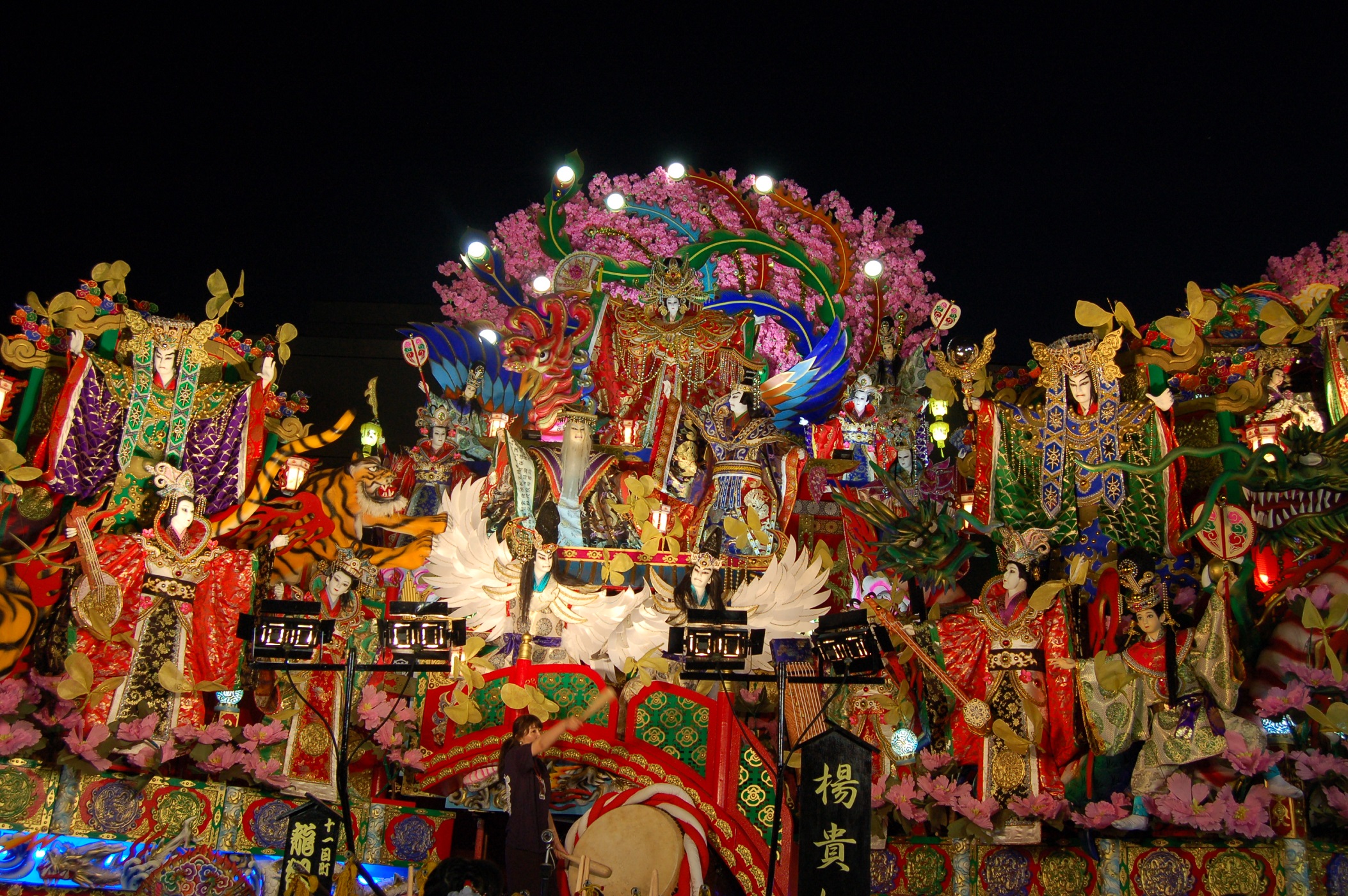
Local Performance Art
Horyo Kagura
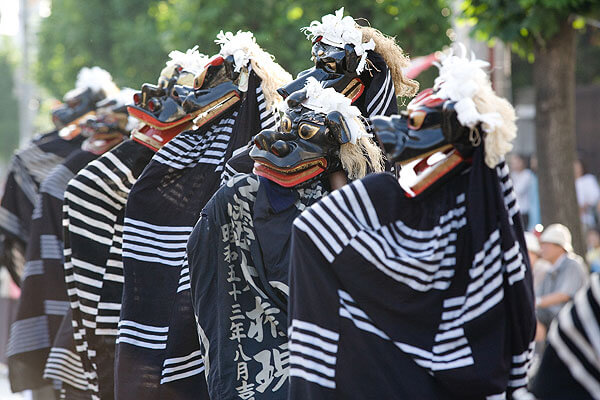
Horyo kagura, a unique kind of shrine music, was initially created by a Buddhist monk and has been passed down through the ages at Ogami Shrine. The central element of the music involves several dancers wearing lion masks which personify the deity Gongen-sama which they move in a precisely timed order and rhythm to cleanse the hearts of the spectators.
» Ogami ShrineToramai (Tiger dance)
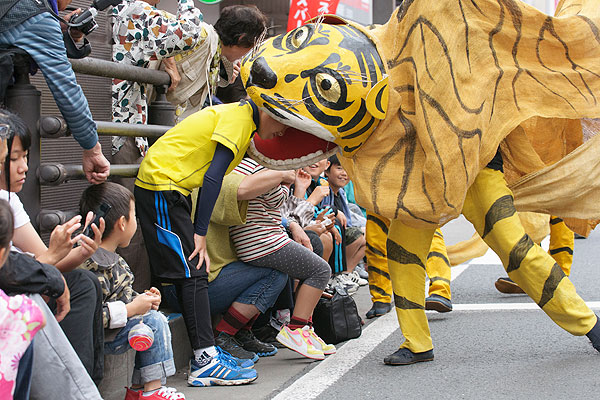
With their humorous movements, the tiger dance entertains roadside spectators. Passed down through the years in many parts of Hachinohe City, including Same, Minato, Konakano, Niida and other areas, the tiger dance is performed through out the parade. It is said that if you are bitten by the tiger, you will have good health, making this a very popular performance.
Daikagura
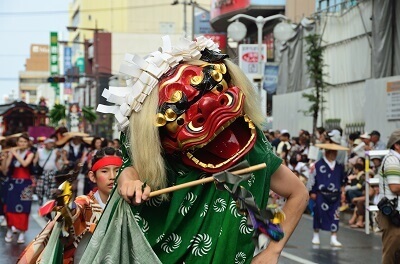
The Shishimai (lion dance) became a performing art because of its connection to worship practices at Ise and Atsuta Shrines. It is said to have started as a Kagura (Shinto ritual ceremonial dance). The performers toured the countryside for those who could not visit Ise and eventually settled in the area.
At the Hachinohe Sansha Taisai Festival, Daikagura leads each shrine procession and purifies the path.
Koma Odori
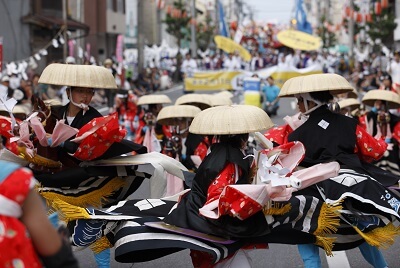
The Koma Odori (horse dance) is a folk performing art from the northern area of Iwate Prefecture where dancers wear fake armors and hold fake horses as they hop from one foot to the other in a rhythmic manner. The dance was performed at the Hachinohe Sansha Taisai Festival from the Meiji era (1868-1912), and although participation eventually ceased, locals revived the dance in the Heisei era (1989–2019).
The Takadate Koma Odori of Takadate, Hachinohe, is the representative group. In addition to participating in the Hachinohe Sansha Taisai Festival, they also perform at the annual festival of Koda Hachiman Shrine in Takadate.
Sasa-no-ha Odori (Bamboo Leaf Dance)
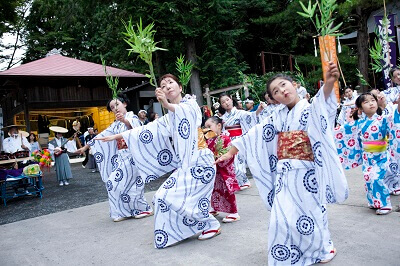
The Sasa-no-ha or Bamboo Leaf Dance is a dance that was orginally preformed during the Sansha Taisai back in the days of the Hachinohe Domain. During the Meiji Period it disappeared from the festival, buck thanks to the work of the Ogami Shrine, who consulted old records and books, it was revived at the beginning of the Heisei Era.
During the Sasa-no-ha Odori around 15 dancers dance a graceful dance to the tune of the accompany festival band as they hold a sprig of Bamboo leaves in their hands, and is said to calm the hearts of those watching.
Tekomai (dancers)
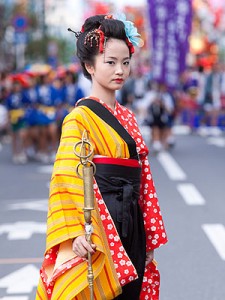
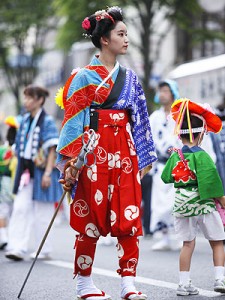
Two floating leading dancers (tekomai), dressed in traditional clothing, lead the float parade while clacking sticks together.
Hanayatai (flower stall)
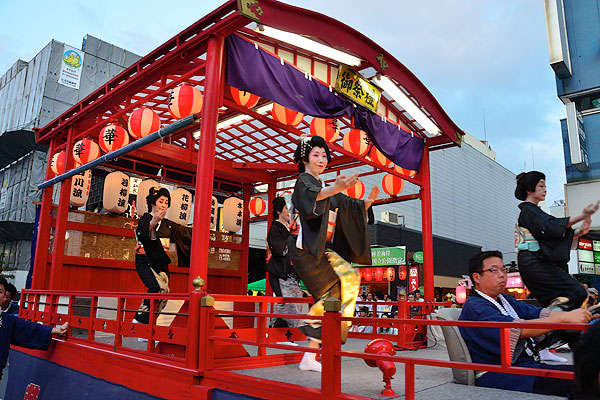
The end of the parade features the hanayatai, where dances such as the Hachinohe kota (ballad) are performed.
The making of the Sansha Taisai Festival Floats
Every year from around the beginning of May, neighborhoods across Hachinohe begin making their dashi or festival float. From one month out to the festival, light glows from the sheds that house each groups dashi as they work deep into the night. The people that make the parade floats aren’t professionals, instead they are just regular members of the community who gather in their neighborhoods at night after they get off work, and work together to create this magnificently gigantic structures. It is no exaggeration to say that without the dedication and hours of work that the float makers invest into their neighborhood’s dashi there would be no festival.
After the festival is finally finished a few of the floats will be borrowed for neighboring festivals, or even used in national events, but eventually all of the floats that the regular people of Hachinohe have spent so much time and energy on are dismantled and broken down. Every year a new theme or story is picked for the floats, so they must be taken apart to prepare to start from scratch for the next festival. No two floats out of the 27 are the same, and every year they change again. This impactful display of tireless ingenuity is what lends the festival its lasting impression of beauty, vibrancy, and ultimately ephemeralness.
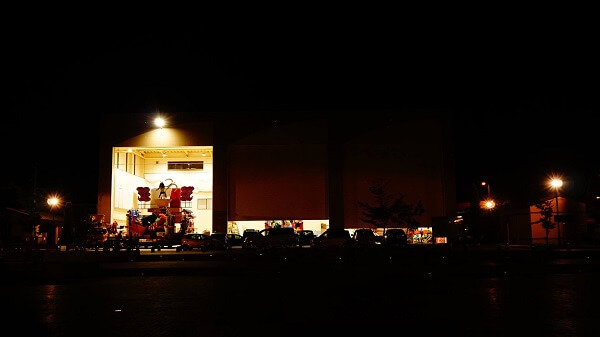

The Four Themes of the Hachinohe Sansha Taisai Floats
The floats of the Sansha Taisai are decorated with different scenes from classic Chinese and Japan stories, folktales, Kabuki plays and more. All of the floats, though, utilize four distinct themes as the backdrop with from which to build their stories. In recent years there have been dashi groups that have used and blended multiple themes together, but at its base, each float can be identified as following into one of the four categories below. See if you can find the base theme for your favorite float this festival season.
Rock Themed
Rock themed floats are recognizable by their predominate use of black rocks and boulders contrasted with red and yellow autumn foliage and occasionally waterfalls
Wave Themed
Wave themed floats feature ships or boats as their main stage. Popular scenes from famous sea battles are often depicted, and the dynamic waves that seem to spray seafoam out into the crowd as warring boats crash together continue to be some of the most popular.
Building Themed
Building themed floats center around large gates, building rooftops, or even whole castle scenes.
Bridged Theme
Decorated with the red balustrades and railings of Japanese traditional bridges, these floats often feature raided layers in the background and sprays of special fake flower decorations called norihana that adorn the sides of the float
Floats with moving mechanisms
Several floats have a device in which the front and center expand sideways and the rear part rises. When the floats are in operation, if there is space, they will move, so please pay attention to their movements.
On the eve and end of the festival, all the floats will gather at the main street in the city center and at the Shimin Hiroba in front of the City Hall. This is a great opportunity to see the floats in full swing and enjoy the dolls’ expressions, detailed decorations, and well-thought-out scene composition.
